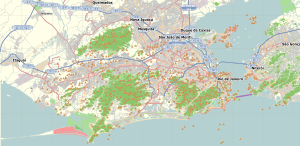Madureira | |
|---|---|
Neighborhood | |
 | |
| Coordinates: 22°52′15″S43°20′12″W / 22.87083°S 43.33667°W | |
| Country | |
| State | Rio de Janeiro (RJ) |
| Municipality/City | Rio de Janeiro |
| Zone | North Zone |
Madureira is a lower-middle-class neighborhood in the North Zone of the city of Rio de Janeiro, Brazil.
Contents
The suburb is the hub to several bus lines that reach several parts of the city of Rio de Janeiro. It is famous for being home of the samba schools Portela and Império Serrano, two of the most traditional samba schools of Rio de Janeiro.
Madureira borders other suburbs such as Cascadura, Cavalcanti, Vaz Lobo, Engenheiro Leal, Turiaçu, Campinho and Oswaldo Cruz, and it has approximately 50 thousand inhabitants.

